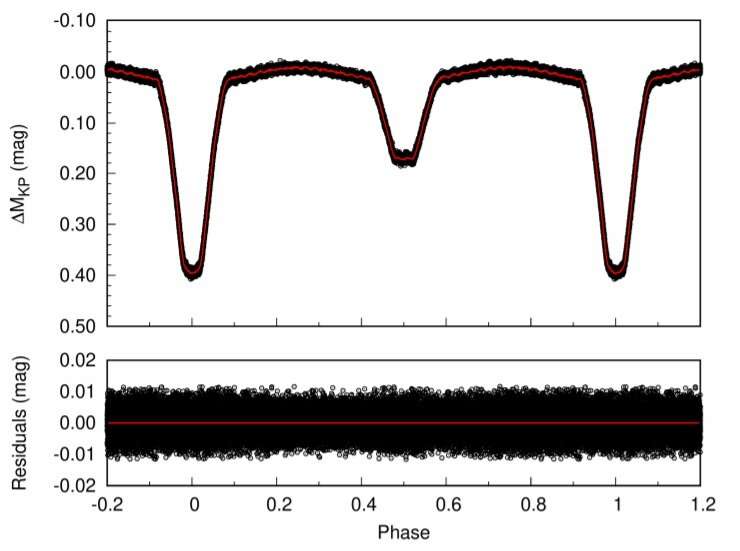August 17, 2021 report
OO Dra is an Algol-type binary formed through an extremely helium-poor mass accretion

Using data from NASA's TESS satellite, Chinese astronomers have investigated a binary star known as OO Dra. The study found that this object is an Algol-type binary that was formed as a result of an extremely helium-poor mass accretion process. The findings are reported in a paper published August 6 on the arXiv pre-print repository.
Astronomers are interested in finding new eclipsing binaries with pulsating components and studying them in detail, as they are important objects that could lend a better understanding of stellar structure and evolution.
Algol-type binaries are a class of eclipsing binary stars related to the prototype member of this class, known as Beta Persei or Algol. They are semi-detached systems whose less-massive component transfers mass to the more massive component due to filling its Roche lobe, causing mass and angular momentum loss.
Discovered in 2007, OO Dra is an eclipsing binary with an orbital period of approximately 1.24 days. The primary star in this system is estimated to be about two times larger and more massive than the sun, while the secondary star is assumed to have a radius of some 1.2 solar radii and a mass of around 0.19 solar masses.
Previous studies of OO Dra have revealed its pulsating nature and suggested that it may be an Algol-type binary. To further test this hypothesis and to shed more light on the properties of OO Dra, a team of astronomers led by Xinghao Chen of the Chinese Academy of Sciences has inspected this system with the TESS spacecraft.
"In this work, we extend works of Zhang et al. (2014) and Lee et al. (2018), and perform a more comprehensive asteroseismic analysis for the eclipsing binary OO Dra," the researchers wrote in the paper.
OO Dra was observed in two-minutes cadence mode by TESS from December 24, 2019 to February 18, 2020. Based on this dataset, the team has performed simultaneous frequency analyses and asteroseismic modelings for this system and obtained seven confident independent frequencies that point out to a Delta Scuti-type pulsating nature of OO Dra. Generally, most eclipsing binaries with Delta Scuti-type pulsations are found to be Algol-type systems.
Moreover, the study found that the primary star of OO Dra has a radius of about 2.07 solar radii and a mass of approximately 1.92 solar masses. Its effective temperature was measured at some 8,346 K, while its metallicity was estimated to be at a level of about 0.011.
According to the authors of the paper, the results indicate that OO Dra is a detached system with the cool secondary star almost filling its Roche lobe. This suggests that OO Dra is most likely an Algol system that has just undergone a rapid mass-transfer stage—a result of an extremely helium-poor mass accretion.
More information: Xinghao Chen et al, OO Dra: an Algol-type binary formed through an extremely helium-poor mass accretion revealed by asteroseismology, arXiv:2108.02912 [astro-ph.SR] arxiv.org/abs/2108.02912
© 2021 Science X Network





















